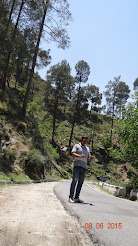Non-existence is also a reality

The Vaisesika philosophy of Hindus, also accept the reality of non-existence (Abhava) and is included into a group of categories. During day time when we look towards the sky and found light of the sun and sun and blue sky but while looking to the light and blue sky, we feel that there is absence of stars and moon is the category of non-existence. Vaisesika accepted 7 categories in which non-existence is also a category. Vaisesika school of thought described seven categories- substance (dravya) quality (guna), action (karma), generality (samanya), particular (vishesh) and inherence (samavaya) and also non-existence (abhava). As per the Vaisesika Sutra non-existence is of two kinds- Absence of something in something else (sarh sargabhava) They are of three kinds (1) antecedent non existence (pragabhava) is the non-existence of a thing before it is produced. For example, when we say that on this particular land, I will build a house with bricks. In this the house is no...


